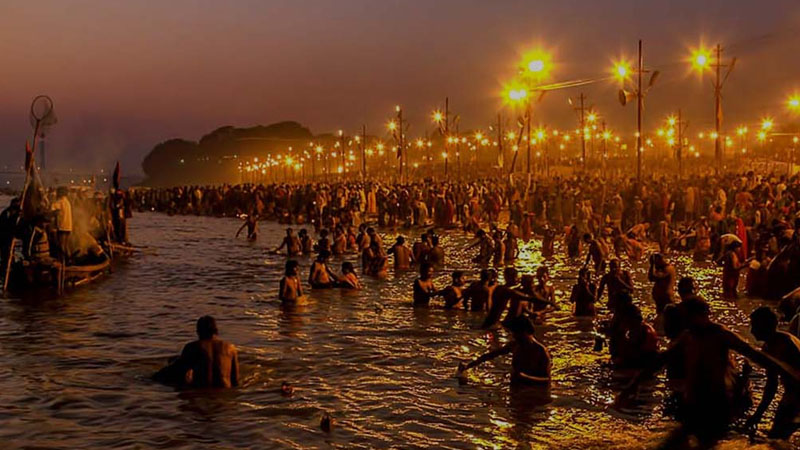Kumbh Mela or Kumbha Mela is recognized as the largest religious gathering in the world. The occasion attracts millions of people from across the globe to bathe in the sacred rivers of India, the Ganga, the Yamuna, the Godavari and the mystical Sarasvati river, to cleanse off their sins. The event takes place four times within a course of 12 years to celebrate the collective act of faith. The religious pilgrimage takes place in four holy cities of the country, namely, Haridwar, Ujjain, Nasik and Prayagraj. Every Kumbh Mela takes place based on astrological positions of the sun, moon and Jupiter. The event is already included in the UNESCO in the list of ‘Intangible Cultural Heritage of Humanity.’
The festive begins with the mark of Makar Sankranti. The Prayagraj Kumbh Mela 2019 began on Tuesday morning with the dotting ‘Shahi Snan’, an integral part of the Kumbh Mela. The tradition of ‘Shah Snan’ is said to be originated in the 14th-16th the century. The ritual is named after the ‘holy dip’ taken by the visitors in the sacred rivers. The ceremony begins with the sadhus reaching the river bank in decorated palkhis. The common belief is making a dip in the river before the mahurat. It helps one to attain immortality. After the bathing of sadhus, the common visitors can take the holy dip.
The visitors in the ‘mela’ come from diverse and all sections of Hindu religious life. Ranging from Sadhus, who practice ‘sadhana’, to Hermits, who leave their seclusion and come to visit the civilisation only during the Kumbh Mela. Numerous rituals take place during this 48-day event. The traditional procession of Akharas called ‘Peshwai’ on elephant backs, horses and chariots to the shining swords and rituals of Naga Sadhus during ‘Shahi Snan’.
The 2019 Kumbh Mela withholds facilities provided by the government for smooth conduct of the event.
- The world’s largest temporary city in the word is set up along Prayagraj, which has 250-km long roads and 22 pontoon bridges.
- More than 40,000 LED bulbs have been installed to brighten up the Kumbh Mela.
- For the first time, an Integrated Control Command and Centre has been established in the Kumbh area.
- The Indian Railways will run 800 special trains to Prayagraj. Air India has also announced new flights to the Kumbh Mela.
- Uttar Pradesh State Tourism Development Corporation (UPSTDC) has announced the launch of a helicopter service namely ‘joyride’ for a tour of Kumbh 2019. This helicopter service will start from January 17 and would continue till February. Around 4000 hotspots are being set up across the area providing high-speed Wi-Fi for all pilgrims and visitors.
- 4000 hotspots installed for proving high-speed high-speed
